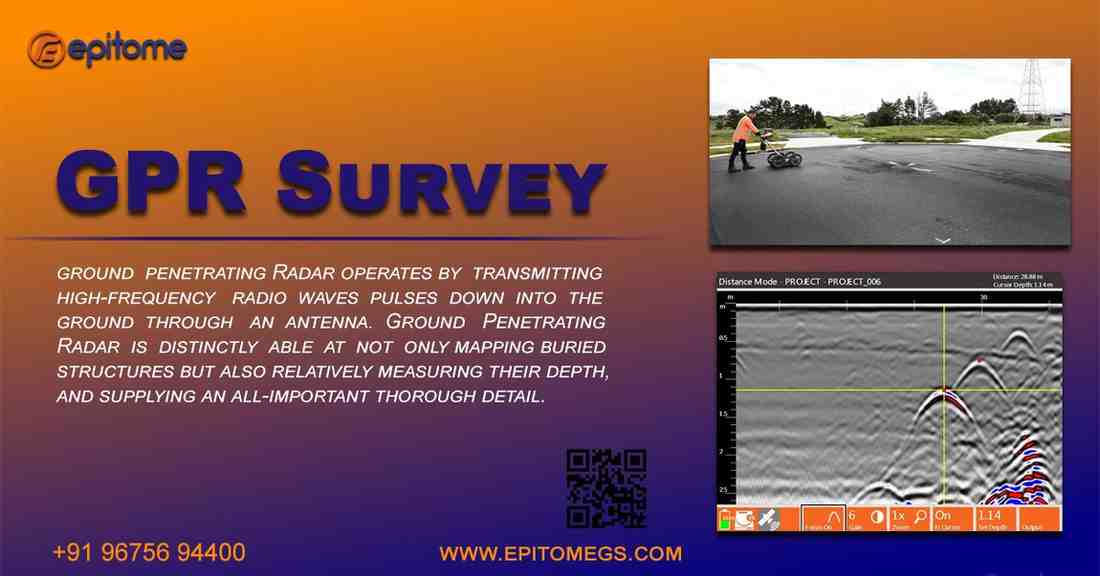


Epitome Geo-technical Services offers Ground Penetrating Radar (GPR) Survey to detect underground utilities, voids, and structures with precision.
In the ever-evolving field of geotechnical engineering, precision and efficiency are paramount. Traditional excavation methods often disrupt sites, delay projects, and drive up costs. Enter Ground Penetrating Radar (GPR), a game-changing technology that is reshaping the way geotechnical professionals assess and analyze subsurface conditions.
GPR is a non-invasive geophysical method that uses electromagnetic waves to detect objects, voids, and variations in subsurface materials. By sending high-frequency radio signals into the ground and analyzing the reflected waves, engineers can create detailed maps of underground structures without disturbing the surface.
Epitome Geotechnical Services harnesses the power of GPR to provide cutting-edge subsurface investigations. Here’s how GPR is transforming geotechnical assessments:
Non-destructive: No need for extensive digging or drilling, preserving the integrity of the site.
Time-efficient: Rapid data collection and real-time analysis accelerate decision-making.
Cost-effective: Reduces the need for exploratory excavation, cutting project expenses significantly.
Accurate & Reliable: Delivers high-resolution imagery of underground conditions, minimizing uncertainties in geotechnical assessments.
As technology advances, GPR continues to evolve with higher-resolution imaging, deeper penetration capabilities, and AI-driven data analysis. Epitome Geotechnical Services remains at the forefront of this innovation, ensuring that clients receive precise, efficient, and environmentally responsible subsurface solutions.
Whether it’s for infrastructure development, forensic investigations, or environmental assessments, GPR is proving to be an indispensable tool in modern geotechnical services. By embracing this technology, engineers and developers can build smarter, safer, and more sustainable projects.
Explore the unseen beneath your feet with Epitome Geotechnical Services – where innovation meets precision!
As technology advances, GPR continues to evolve with higher-resolution imaging, deeper penetration capabilities, and AI-driven data analysis. Epitome Geotechnical Services remains at the forefront of this innovation, ensuring that clients receive precise, efficient, and environmentally responsible subsurface solutions.
